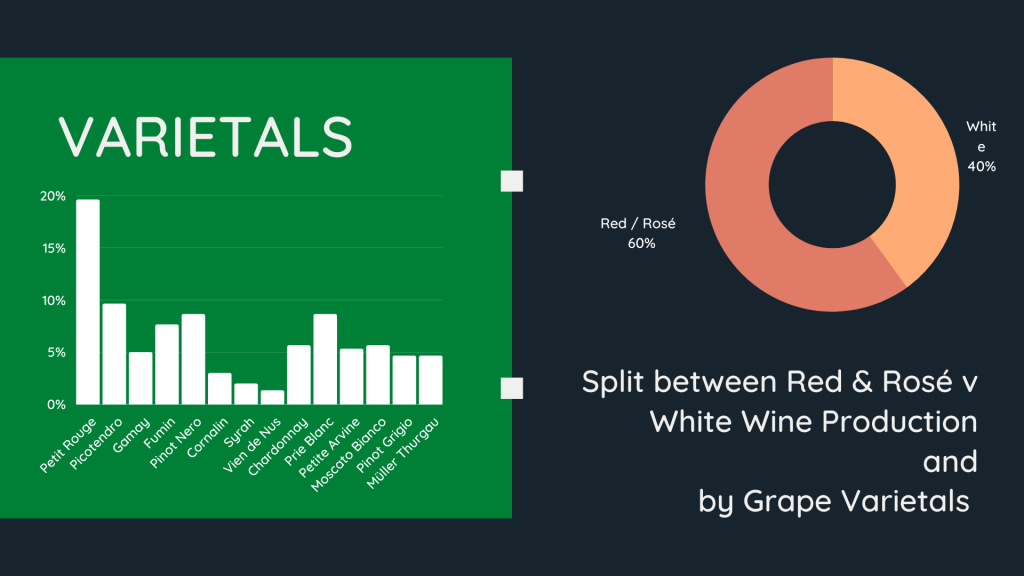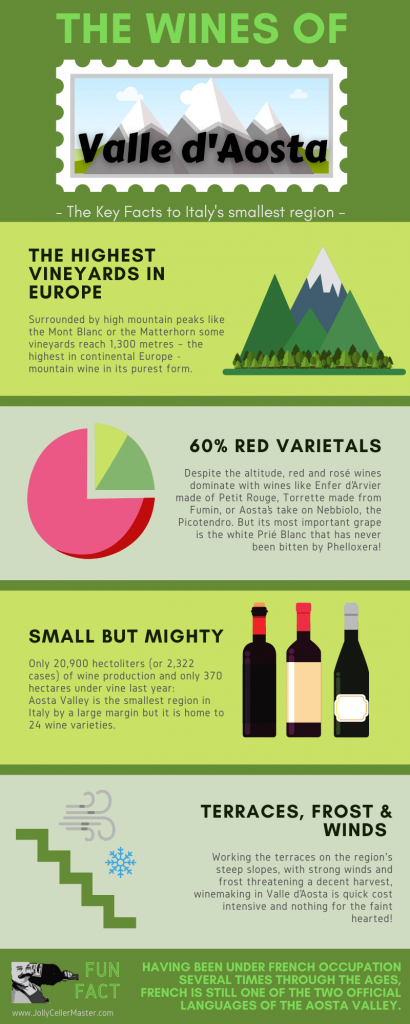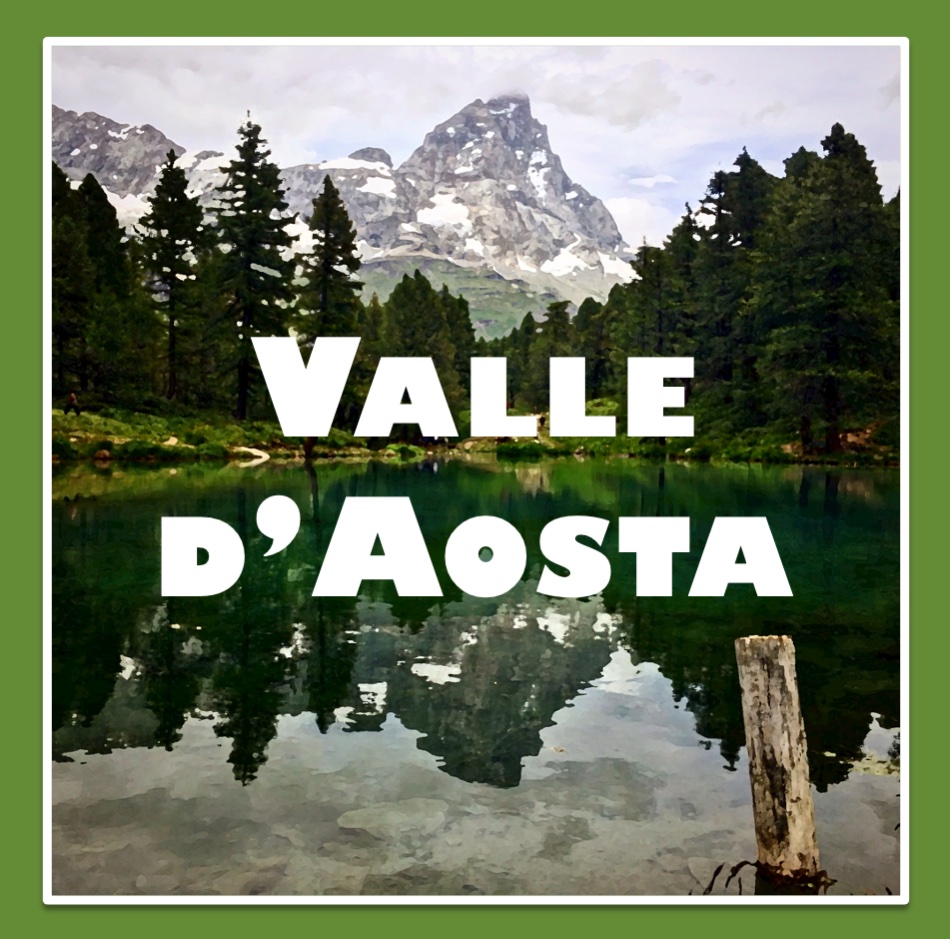With some of the highest vineyards in continental Europe and locked between beautiful peaks, the Aosta Valley is mountain wine in its purest form.

The Valle d’Aosta in the Alps with the Mont Blanc and the Matterhorn on its borders
(Source: Pixabay / © OpenStreetMap contributors – available under the Open Database Licence)
The Key Facts
Climate, Geography and Soil
Surrounded by high mountain peaks – the Mont Blanc sits right on its western border with France while the Matterhorn on its northern border with Switzerland – the valley climbs steadily from 345 metres above sea level at its entrance from Piedmont in the southeast from the Bassa Valle (low valley) to Alta Valle in the west where some vineyards reach 1,300 metres – the highest in continental Europe.
The climate is continental with cold winters and hot summers, but the steep slopes play a key role here. With regard to soil, mountainous granite gives way to sandy clay that gives good drainage
In the Vineyard
While the trend is to use guyot, the pergola is still widely used and you even find gobelet/albarello in the central valley. Obviously, because terraces are the norm given the steepness of the terrain, all work in the vineyard is manual and comes with a high cost of production.
Wine Production
According to the official ISTAT data (the Italian National Institute of Statistics), the wine producers of the Aosta Valley in 2020 made 20,900 hectoliters, which translates into 2,322 cases. It was slightly above average compared to both the 3-year and the 10-year-average that included the terrible harvest of 2017, which saw a drop of more than 50% due to heavy frost and cold weather.
The area under production last year was only 370 hectares (out of a total 472 ha set aside for wine production), but it’s evident that the Aosta Valley is the smallest region in Italy by a large margin.

Varietals, Wines and Wine Growing Areas
Red and rosé wines beat white wine production by 60% to 40%, which at first sight seems surprising given the high altitudes of the Aosta Valley vineyards, but it’s a question of tradition and what works with the region’s traditional foods. Having said that, the Val d’Aosta might be a tiny region compared to others, but is home to two dozen grape varietals.
The region just has one DOC that covers the entire valley, the Valle d’Aosta DOC. It was awarded only in 1985 (though two subregions had their own DOC before that – Enfer and Donnaz), which might explain why there is still a reasonable amount of table wine to around (almost 25% of total production last year). Yet, there are some excellent wines to be found.
Right at the feet of the Mont Blanc, the Blanc de Morgex et de la Salle made from Prié Blanc as still or sparkling wine from ungrafted rootstocks since Phelloxera never really was an issue because of the sandy soil and the height. The Prié Blanc also makes do with a ridiculously short growing season of only 90 days, but if you intend to grow above 1,000 metres you better be quick.
A little further down you’ll find the Enfer d’Arvier (“the Hell of Arvier”), a red wine made of Petit Rouge. The Central Valley is known for its red wines from indigenous varietals like the Torrette made from Fumin. You’ll also find sweet wines made from Moscato or the acclaimed Nus. In the lower valley, you’ll find varietal wines made of Nebbiolo known here as Picotendro or as cuvée where it dominates with at least 70%.

In a Nutshell: The Key Facts Infographic
And if you want the key facts of the Wines of Valle d’Aosta, download and print our infographic:





